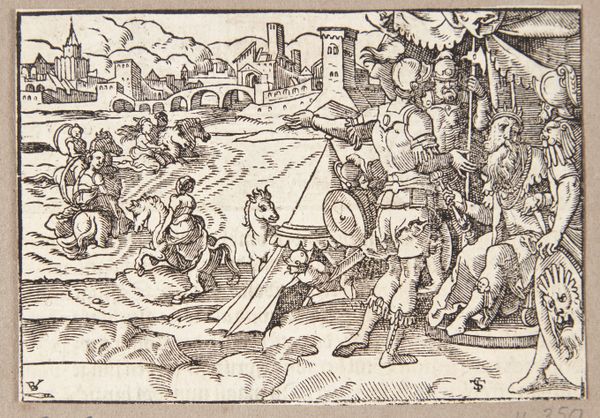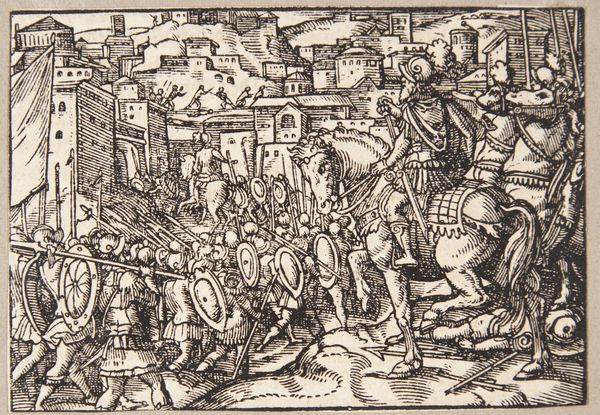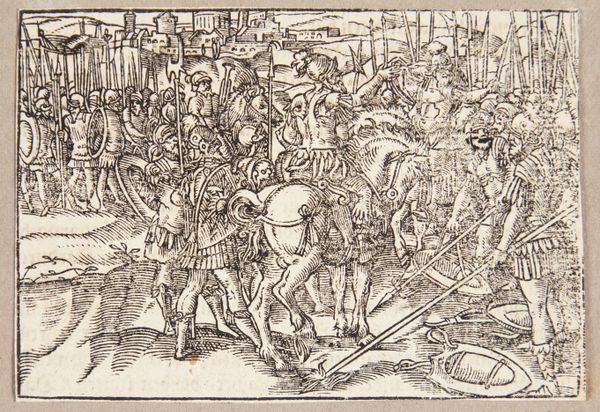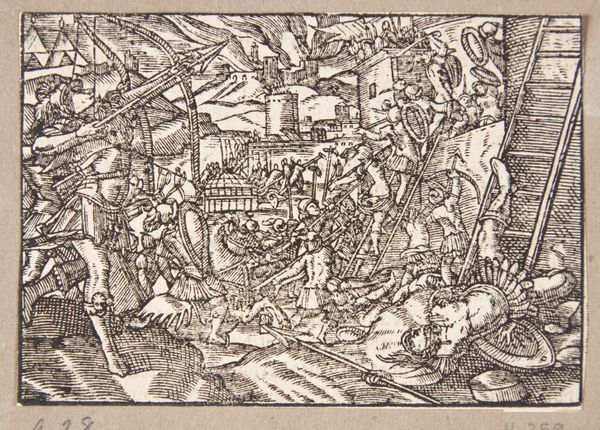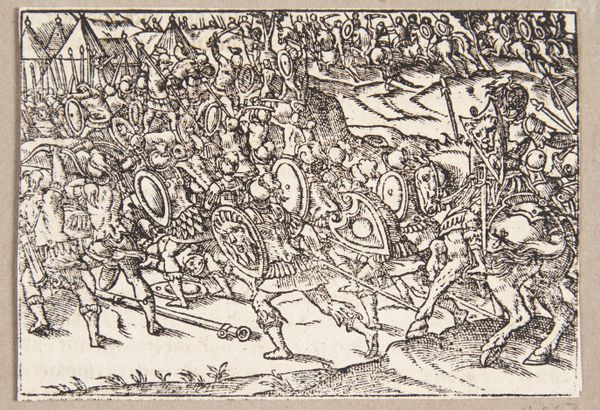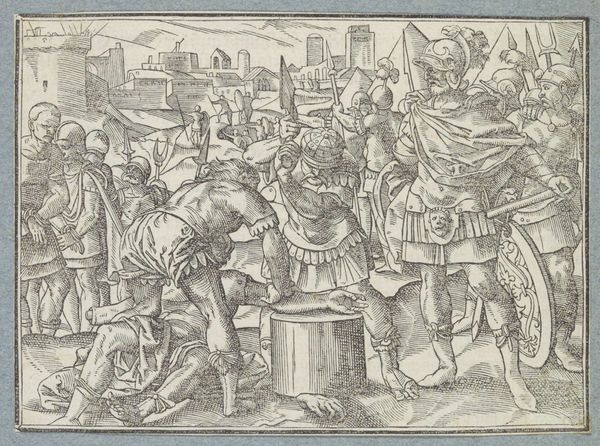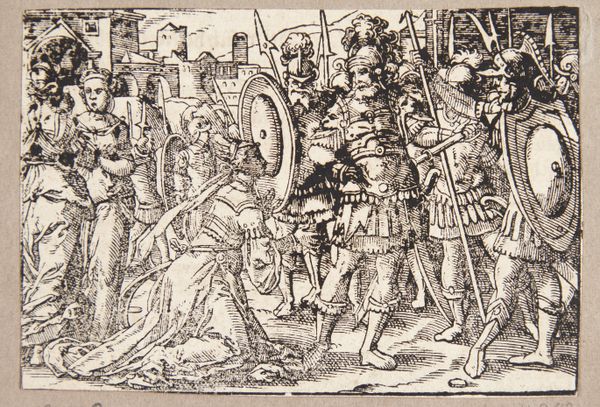
drawing, print, ink, woodcut
#
drawing
# print
#
mannerism
#
ink
#
woodcut
#
history-painting
#
northern-renaissance
Dimensions: 75 mm (height) x 105 mm (width) (bladmaal)
Curator: Well, isn't this little drama unfolding before us? The linework feels almost agitated. Editor: Indeed! Here we have Tobias Stimmer's "Titus Manlius slaying the Gaul on the bridge," dating back to 1574. It's rendered as a woodcut in ink, a rather striking example of Northern Renaissance Mannerism from the collection of the SMK, the National Gallery of Denmark. That frenetic energy is quite characteristic, actually. Curator: Right? It’s like a medieval comic panel, action frozen mid-splatter. I keep wondering what Titus Manlius's inner monologue was at that very moment. A swift "take that, barbarian" or something more tormented? Editor: It's likely something more profound, wouldn’t you agree? Bridges often serve as symbolic thresholds. Here, Stimmer might be evoking the courage necessary for decisive action, or the defense of civilization itself. See how the collapsing Gaul disrupts that crossing point? Curator: Perhaps! Or, maybe Titus was just having a terrible day and the Gaul happened to be nearby. What I find truly engaging is the overall composition. It almost reads as a stage play, that dramatic central struggle between the two warriors staged between watching onlookers and a whole civilization visible on the other side of the shore! Editor: I like that analogy. A key attribute of iconographic depictions such as this is their timelessness; wars fade, empires crumble, but stories of courage— or, as you say, simply surviving a "terrible day"— resonate eternally. The figures in the foreground stand firm. Perhaps, as we examine this image centuries later, their story becomes intertwined with ours? Curator: A point well-taken, really. It reminds me that even old stories have surprising angles, depending on who's doing the listening – and maybe what kind of day *they’re* having. Editor: Absolutely! It also suggests we can each, viewer by viewer, continually reinvest these classical scenes with new significance. It is a conversation that spans eras.
Comments
No comments
Be the first to comment and join the conversation on the ultimate creative platform.
